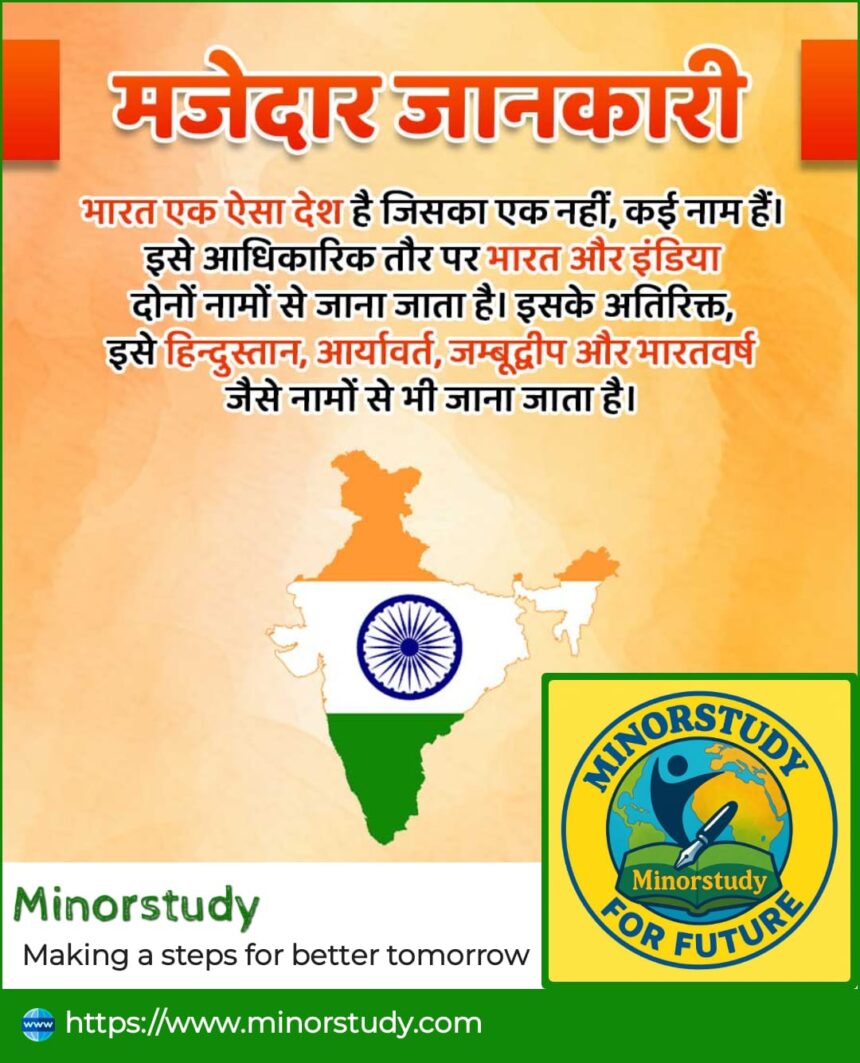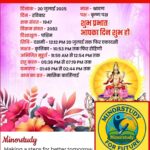🇮🇳 7 Powerful Fun Facts That Reveal the Glorious Identity of India – More Than Just a Name!
India is a land of ancient wisdom, cultural diversity, and timeless identity. But did you know that India is known by not just one but multiple powerful names, each carrying deep historical and spiritual meanings? From Bharat to Aryavarta, each name embodies a unique facet of the Indian civilization.
- 📜 All the Names of India: A Historic Treasure Trove
- 🧭 Timeline: How India’s Names Evolved
- 🤔 FAQs About India’s Many Names
- ❓ Why does India have so many names?
- ❓ Is Bharat the original name of India?
- ❓ Are India and Bharat legally the same?
- ❓ What does “Hindustan” mean?
- 🎯 Significance of These Names in Modern India
- 🎉 Fun Facts You May Not Know
- 🙏 Wishing India a Unified Identity
- 🔑 Important Points to Remember
- 🌏 Daily Life Impacts
- 🧠 Conclusion: India Is More Than Just a Name
In this article, let’s go beyond the surface and dive deep into India’s many names, their historical origins, cultural significance, spiritual meaning, and their impact on modern Indian identity. You’ll also discover fun facts, common questions, and why these names matter even today — in a detailed, human-friendly format with over 1200+ words.
📜 All the Names of India: A Historic Treasure Trove
India isn’t just a country; it’s an idea, a civilization, a soul. Over centuries, India has been referred to by many names in texts, scriptures, and foreign accounts. Let’s explore the most popular ones:
1. 🇮🇳 India
Origin: From the Indus River, known as Sindhu in Sanskrit.
Given by: Greeks and Persians, who called the land beyond the Indus “Indos” or “Hindos”.
Modern Relevance: It became widely used during the British era and remains India’s official name internationally.
2. 🇧🇭 Bharat
Origin: Derived from King Bharata, a legendary emperor mentioned in the Rigveda and Mahabharata.
Meaning: “The land of Bharata’s descendants.”
Constitutional Mention: “India, that is Bharat…” — Article 1 of the Indian Constitution.
Cultural Significance: Still the most emotionally connected name for Indians.
3. 🕌 Hindustan
Origin: Persian term for the land of Hindus.
Popular During: The Delhi Sultanate and Mughal Empire.
Used Today: Common in Bollywood songs, poems, and patriotic slogans (e.g., “Jai Hindustan!”).
4. 🌍 Aryavarta
Literal Meaning: “The land of the noble people (Aryas)”.
Mentioned In: Manusmriti and ancient texts like Mahabharata.
Geographical Reference: Initially meant the northern part of the Indian subcontinent.
5. 🌳 Jambudweep
Origin: Found in Jain, Buddhist, and Hindu cosmology.
Meaning: “The island of the Jambu (Blackberry) tree.”
Context: Refers to the terrestrial plane or continent in the ancient worldview.
6. 🕉 Bharatvarsha
Composite Meaning: “The realm of Bharata”.
Scriptural Mention: Vishnu Purana and Bhagavata Purana describe Bharatvarsha as one of the nine regions of the earth.
Spiritual Symbolism: Represents dharma, unity, and divinity.
7. 🛕 Al-Hind
Used In: Arabic and Islamic texts.
Meaning: “Land of the Hindus” or “Land beyond the River Indus”.
Context: Frequently used in medieval Islamic writings.
🧭 Timeline: How India’s Names Evolved
| Era | Name Used | Context |
|---|---|---|
| 1500 BCE | Bharatvarsha, Aryavarta | Vedic scriptures |
| 6th Century BCE | Jambudweep | Jain & Buddhist cosmology |
| 5th Century BCE | Hindustan | Introduced by Persians |
| 3rd Century BCE | Bharat | Inscriptions during Mauryan rule |
| 13th Century CE | Al-Hind | Used by Islamic invaders |
| 16th Century CE | Hindustan | Flourished during Mughal rule |
| 18th Century CE | India | Adopted by British colonists |
| 1950 CE | Bharat & India | Official names in Constitution |
🤔 FAQs About India’s Many Names
❓ Why does India have so many names?
Because of its long civilizational history, foreign influences, and spiritual-cultural complexity. Every region and time brought a new name that reflected India’s identity in that era.
❓ Is Bharat the original name of India?
Yes. Bharat is the most ancient and native name rooted in Indian epics and Puranas. It predates all foreign references like “India” and “Hindustan.”
❓ Are India and Bharat legally the same?
Yes. India and Bharat are legally interchangeable as per the Indian Constitution (Article 1).
❓ What does “Hindustan” mean?
Hindustan originally meant “land beyond the Indus,” and gradually came to mean the land of Hindus or the Indian subcontinent under Persian and Mughal usage.
🎯 Significance of These Names in Modern India
🌱 Cultural Identity
Names like Bharat, Aryavarta, and Bharatvarsha carry a deep connection with Indian heritage, dharma, and spirituality.
🌍 Global Recognition
“India” has become the international face of the country — used in diplomacy, trade, sports, and international organizations like the UN.
🧠 Spiritual Philosophy
Names like Jambudweep and Aryavarta come from scriptures that describe India not just as geography but as a spiritual realm.
🗣️ Language Diversity
Different names also reflect linguistic plurality — Bharat in Hindi, India in English, Hindustan in Urdu and Persian contexts.
🎉 Fun Facts You May Not Know
India is one of the only countries to be mentioned in all three ancient religions — Hinduism, Buddhism, and Jainism — as a sacred land.
The word ‘India’ doesn’t appear in any Vedic text. Instead, it’s always Bharat or Bharatvarsha.
Hindustan is used more in cultural expressions than formal ones. Songs, literature, and poetry still adore this name.
Jambudweep is not just a poetic name but part of the ancient Indian cosmic map.
Aryavarta was considered the land of knowledge, peace, and dharma in early texts.
🙏 Wishing India a Unified Identity
On every Republic Day, Independence Day, or International forum, let us not forget the layers of meaning hidden in the names we chant proudly — Bharat, India, Hindustan.
“Bharat Mata ki Jai” is not just a slogan — it’s a whisper from history, echoing through every Indian heart.
So today, we offer our heartfelt wishes to the soul of our civilization — Bharatvarsha. May her identity remain strong, proud, and rooted in her glorious past.
🔑 Important Points to Remember
“India” is foreign in origin; “Bharat” is indigenous.
Every name reflects a different historical or spiritual layer of India’s story.
The Constitutional identity of India includes both names.
Names carry emotion — they reflect how people see themselves.
These names show how India is both a political entity and a spiritual-cultural civilization.
🌏 Daily Life Impacts
Cultural Awareness: Helps people connect to their roots and pride in heritage.
National Identity: Strengthens unity and pluralism.
Global Perception: Shapes how India is viewed abroad.
Literature & Art: Enriches content, expression, and philosophical thought.
🧠 Conclusion: India Is More Than Just a Name
India is not just a country. It’s an emotion, a philosophy, and a living heritage that has taken many names over millennia — each as powerful, profound, and poetic as the last.
Whether you say “Bharat Mata”, “Incredible India”, or “Hindustan Zindabad”, you are invoking a civilization that has lived through time, trauma, triumph, and transformation.
So the next time someone asks you where you’re from, say it with pride:
“I’m from Bharat. I’m from India. I’m from the land of Jambudweep. I’m from the soul of the world.”








